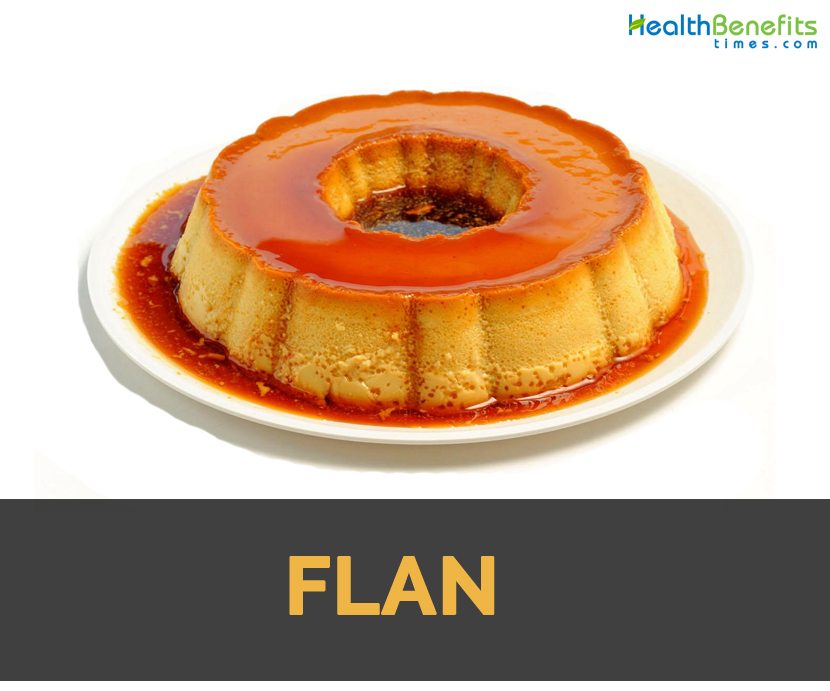History
Roman cuisines are more familiar to Flan. Usually, it is a savory dish as eel flan and sweet flans are created with pepper and honey. Both savory and sweet flans made with cinnamon, sugar, almonds, spinach, curd, cheese and fish are prominent in Europe during Lent when meat was prohibited.
CITRUS-AND CINNAMONSCENTED FLAN
At home we like our flan less eggy and with a creamier, lush texture, flavored with an infusion of cinnamon and lemon and orange peels— a lovely nod to the profuse Moorish influences in the Spanish kitchen.Individual flan molds or ramekins that hold 5 to 6 ounces/150 to 175 ml are ideal. The final texture should be a bit jiggly, just as this Spanish expression indicates: “Como un flan” (like a flan) means to be shaking with nerves or fear.
Ingredients:
- 3 cups/720 ml whole milk
- Peel of 1 organic orange, white pith scraped away
- 1 cinnamon stick
- 6 eggs
- 6 tablespoons/300 g sugar, plus 1 cup/220 g
- Fresh whipped cream for garnishing (optional)
Directions:
- In a saucepan, bring the milk, citrus peels, and cinnamon stick to a boil over medium heat, stirring to keep the bottom from scorching. Remove from the heat and let the flavors infuse for 20 minutes or so as it cools.
- Meanwhile, preheat the oven to 300°F/150°C/gas mark 2. Arrange eight flan molds, fluted brioche molds, ramekins, or custard cups in a baking pan.
- In a small saucepan, dissolve the 6 tablespoons/80 g sugar in 3 tablespoons water over medium heat. When it reaches a boil, reduce the heat to medium-low and simmer without stirring until caramelized into a rich amber color, 8 to 10 minutes. Immediately pour into the molds, tilting them as needed to cover the bottoms evenly before the caramel hardens.
- In a large bowl, whisk the eggs with the remaining 1 cup/220 g sugar. Strain the milk, discarding the cinnamon stick and citrus peels. In a slow, steady stream, while whisking continually, pour the milk into the eggsugar mixture. Divide the custard evenly among the molds.
- Bring a saucepan of water to a boil. Pour the hot water into the baking pan until it reaches halfway up the outside of the molds. (Do not splash any water into the molds.) Gently slide the pan into the oven and bake until the flans are set, about 50 minutes. A knife tip should come out clean when inserted just off center.
- Remove from the oven, take the molds from the water bath, and let cool to room temperature. Refrigerate until well chilled.
- To serve, unmold the flans by running the tip of a thin knife around the top edge of a flan, covering the mold with a dessert plate, and inverting, jiggling the mold until the flan is released. Let the caramel run over the top and down the sides. If desired, garnish with fresh whipped cream, either encircling the flans or surrounding them with a series of swirled peaks.
References:
https://en.wikipedia.org/wiki/Flan
https://en.wikipedia.org/wiki/Cr%C3%A8me_caramel
https://communitytable.parade.com/217480/ericadinho/12-variations-on-the-classic-flan/
Comments
| Flan Quick Facts | |
|---|---|
| Name: | Flan |
| Origin | Spain, France |
| Shapes | Round |
| Taste | Sweet |
| Calories | 73 Kcal./cup |
| Major nutrients | Carbohydrate (14.80%) Selenium (8.18%) Sodium (6.07%) Potassium (0.68%) Calcium (0.50%) |
| Name | Flan |
|---|---|
| Place of Origin | Spain, France |
| Common/English Name | Classic flan, Crème caramel |
| Course | Dessert |
| Serving temperature | Cold or warm |
| Main ingredients | Eggs |
| Variations | Crème brûlée, crema catalana |
| Taste | Sweet |
| Texture | Smooth |
| Shape | Round |
| Major Nutritions | Carbohydrate 19.24 g (14.80%) Selenium, Se 4.5 µg (8.18%) Sodium, Na 91 mg (6.07%) Potassium, K 32 mg (0.68%) Calcium, Ca 5 mg (0.50%) Copper, Cu 0.003 mg (0.33%) Iron, Fe 0.02 mg (0.25%) Zinc, Zn 0.01 mg (0.09%) Manganese, Mn 0.001 mg (0.04%) |
| Calories in 1 portion, amount to make 1/2 cup (21 g) | 73 Kcal. |



